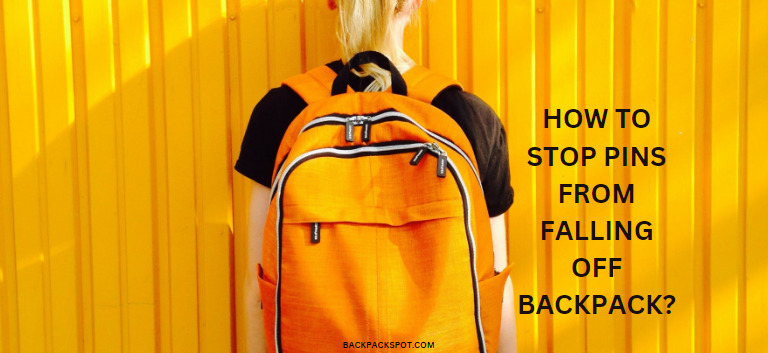How Do You Measure the Volume of a Backpack? (Detailed Guide 2023)
In today’s world of innovation and efficiency, backpacks have become indispensable. Whether you’re a student lugging textbooks, a hiker exploring the great outdoors, or a traveler navigating busy airports, knowing how to measure the volume of a backpack can be incredibly useful.
Here’s how you can find out: This can be done by measuring the backpack’s linear dimensions (height, width, and depth) and multiplying them. As a result, we will get the backpack’s volume in cubic centimeters or meters (depending on the base unit).
In this guide, we explore how do you measure the volume of a backpack using various methods. So, without further delay, let’s get started!
Why Measure Backpack Volume?
Before we dive into the nitty-gritty of measuring backpack volume, let’s discuss why it’s so important. Backpack volume, often expressed in liters (L) or cubic inches (cu in), determines how much stuff you can stow away in your trusty pack. This measurement helps you choose a backpack that accommodates your specific needs without being too small or oversized.
Imagine cramming your textbooks into a tiny daypack or carrying a colossal backpack for a simple day hike. Neither scenario is ideal, and that’s where measuring backpack volume comes in handy. It ensures you optimize your pack’s capacity for comfort and convenience.
Understanding Backpack Volume Units
Backpack volume is typically measured in liters (L) or cubic inches (in³). The choice of unit may vary depending on the manufacturer or region, so it’s essential to understand both units for accurate comparisons.
- 1 liter (L) is approximately equal to 61 cubic inches (in³).
- 1 cubic inch (in³) is roughly equivalent to 0.0164 liters (L).
Most backpacks will have their volume listed in liters, which is the more widely accepted unit of measurement.
Methods: How Do You Measure the Volume of a Backpack?
Now that we’ve established the significance of measuring backpack volume, let’s explore various methods to do so:
Method 1: Manufacturer’s Label
The easiest way to determine your backpack’s volume is to check the manufacturer’s label. Most backpacks come with a tag that provides the volume in liters or cubic inches. It’s usually located inside the main compartment or on one of the side pockets. Look for terms like “capacity” or “volume.”
Pro Tip: If the label is faded or missing, you can usually find this information on the manufacturer’s website using your backpack’s model name or number.

Method 2: Measuring Backpack Volume in Liters
Measuring backpack volume in liters is the most common method, as it provides a straightforward and universally recognized unit. Here’s a step-by-step guide on how to do it:
Step 1: Empty Your Backpack
Start by emptying your backpack completely. Make sure there’s no debris, leftover items, or hidden treasures from your last adventure inside to get an accurate measurement.
Step 2: Find the Main Compartment
Identify the main storage area of your backpack. This is usually the largest section.
Step 3: Use a Measuring Cup
Fill the main compartment with water using a measuring cup. Be sure to fill it to the brim without overfilling.
Step 4: Fill the Cup
Carefully pour the water from the backpack into the measuring cup. The number of liters in the cup is an approximate measure of your backpack’s volume.
Step 5: Repeat if Necessary
For backpacks with multiple compartments, repeat the process for each one and add the results together to get the total volume.
Method 3: Measuring Backpack Volume in Cubic Inches
If you prefer using cubic inches, follow these steps:
Step 1:Empty Your Backpack
Just like with the liter measurement, start with an empty backpack.
Step 2:Find the Main Compartment
Identify the main storage area of your backpack.
Step 3: Use a Ruler
Fill the main compartment with small, uniform items like rice or beans. Then, using a ruler, measure the length, width, and height of the compartment in inches.
Step 4: Multiply the Dimensions
Multiply the length, width, and height measurements together to calculate the cubic inches of the main compartment.
Step 5: Repeat for Additional Compartments
If your backpack has multiple compartments, repeat the process for each one and add the results together for the total volume.
Example Calculation
Let’s say your backpack measures 20 inches in length, 12 inches in width, and 8 inches in height. To find the volume in cubic inches (in³):
Volume = Length (in) x Width (in) x Height (in)
Volume = 20 in x 12 in x 8 in
Volume = 1920 in³
Now, to convert to liters (L):
Volume (L) = 1920 in³ ÷ 61
Volume ≈ 31.47 L
So, your backpack has a volume of approximately 31.47 liters (L).
Which Method Should You Choose?
The method you choose to measure your backpack’s volume depends on your preferences and the accuracy required. If you seek a highly accurate measurement, the water displacement method is your best bet.
However, it might not be practical for very large backpacks. The fill and measure method is excellent for estimating volume while checking the manufacturer’s specifications is quick and convenient.
Importance of Accurate Measurement
Now that you know how to measure the volume of a backpack accurately let’s discuss why accuracy is crucial. Choosing a backpack that matches your needs is essential for various reasons:
Comfort
An accurately sized backpack ensures even weight distribution, reducing strain on your back and shoulders.
Efficiency
It helps to avoid overpacking or underpacking, which can be inconvenient and inefficient during your activities.
Functionality
Different activities require different volumes. A hiker’s needs differ from a student’s or a traveler’s, so the right volume ensures your backpack serves its purpose effectively.
Aesthetics
An appropriately sized backpack looks better and complements your style, whether you’re heading to class, work, or an outdoor adventure.
Choosing the Right Backpack Volume
Now that you’ve mastered the art of measuring backpack volume, it’s time to apply this knowledge when selecting your ideal backpack. Consider the following scenarios:
- Daypack (20-30L): Perfect for daily commutes, short hikes, or as a carry-on bag for flights.
- School/Work Backpack (25-40L): Provides ample space for books, laptops, and essentials.
- Weekend Getaway (40-50L): Ideal for short trips, allowing you to pack clothing and essentials.
- Travel Backpack (50-70L): Offers enough room for extended trips and backpacking adventures.
- Hiking Backpack (60-80L): Designed to carry camping gear and supplies for multi-day hikes.
Consider reading 10 Tips How To Find a Quality Backpack. (Ultimate Guide)
Conclusion
Hopefully, after reading this article, you know how do you measure the volume of a backpack. Having this knowledge will enable you to confidently measure your backpack, ensuring your safety on any adventure you undertake. So, whether you’re a student, traveler, or outdoor enthusiast, remember that the right backpack volume can make all the difference in the world!
FAQs
Q: Why are backpacks in Litres?
A: The volume of a backpack gives a fair indication of how things are rolled into it, so it typically makes sense to use it.
Q: How big is a 42-liter backpack?
A: The large size and multiple pockets make it perfect for carrying clothes, a first aid kit, water bottles, food for three days, and other survival gear.
Q: What is a good backpack volume?
A: The volume of a good backpack should be between 20 and 29 liters.
References
https://www.orientbag.net/post/how-to-measure-backpack-volume-your-ultimate-guide






